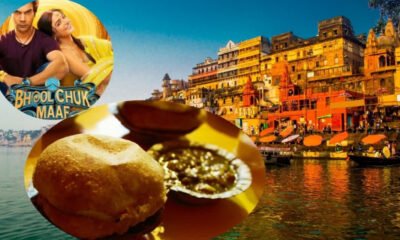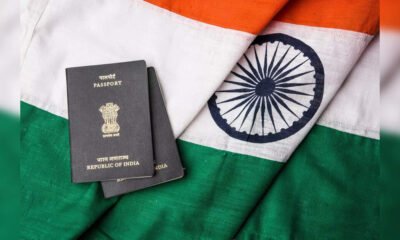Spiritual Travel
A ‘Maha’ spiritual journey
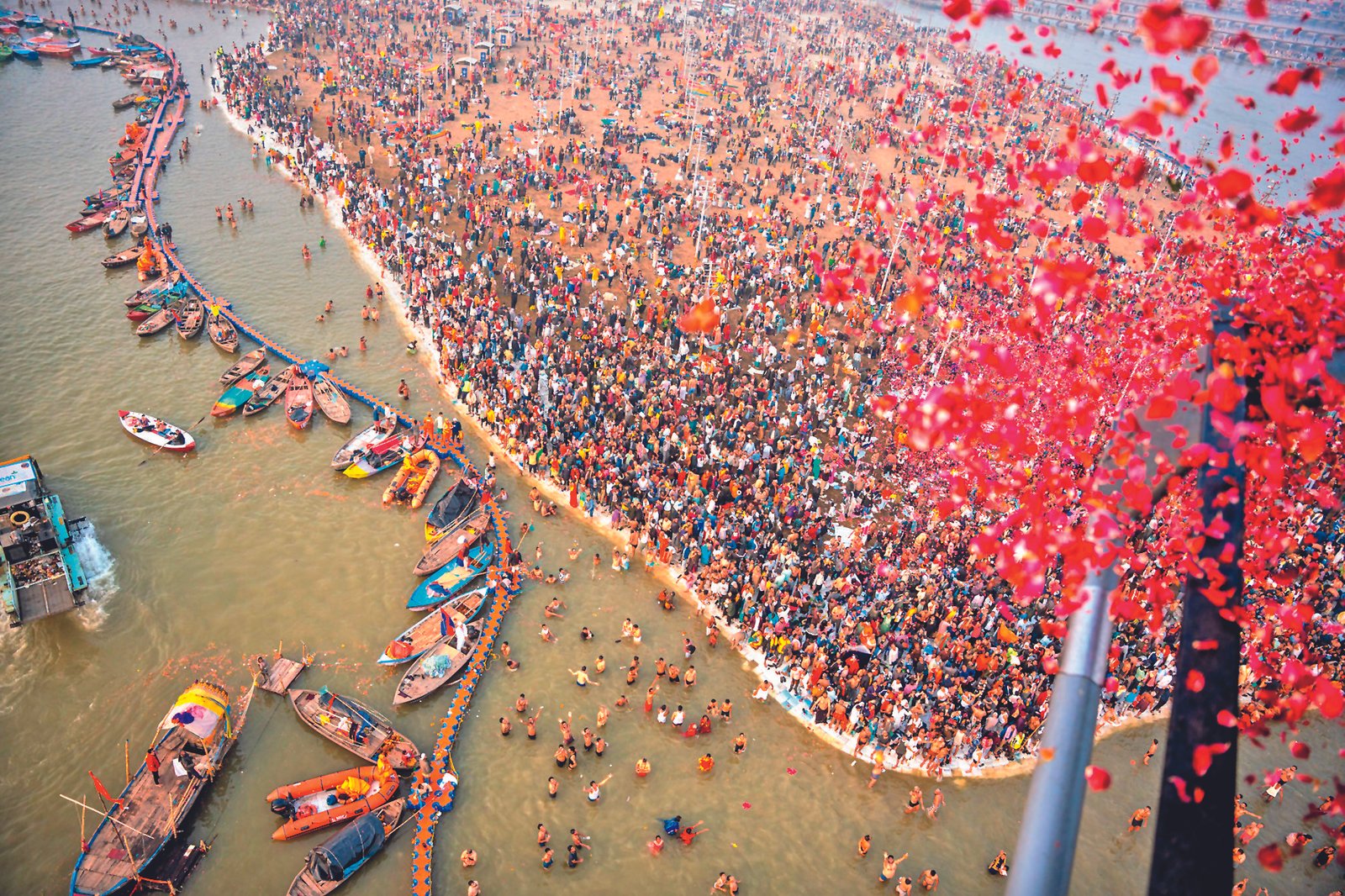
As crores of people embark on a sacred journey to Prayagraj to take a holy dip at the ongoing Maha Kumbh Mela 2025, many devotees, including those from down south, are setting out on a spiritual journey of a lifetime, covering not only Prayagraj but also the grand Ram mandir at Ayodhya, Kashi Vishwanath Temple at Varanasi, and Chitrakoot dham, where Lord Ram spent over 11 years of his exile.
Spiritual journey
For Lata Reddy, Director, Deepaditya Developers, the Kumbh Mela has always been a profound spiritual journey, a chance to reconnect with her roots, reflect inwardly, and cleanse both mind and soul. “What motivated me this time is not just the significance of the event itself but also the opportunity to witness how spirituality continues to thrive in India, blending the ancient with the modern,” says the past chairperson of the FICCI Ladies Organisation. She is among those who plan to visit other sacred sites such as Ayodhya, Varanasi, and Chitrakoot.
Ayodhya is at a distance of about 164 km from Prayagraj, Varanasi is 122 km away. As for Chitrakoot, it is about 130 km from Prayagraj — making it convenient for devotees to visit all the places in one go.
“With the newly constructed Ram Mandir and the beautifully renovated Kashi Vishwanath temple, there’s a renewed sense of devotion and pride in these timeless landmarks. Chitrakoot holds a serene charm and is a place I have always wanted to experience deeply.”
This entire circuit, feels Lata, is like a journey through India’s spiritual and cultural essence. “It’s not just about visiting temples or taking the holy dip — it’s about immersing oneself in the energy of these places and returning with a sense of
peace, purpose, and spiritual fulfilment,” says Lata, who attended the Kumbh Mela in 2013.
‘Humanity’
“What touched me the most about the Maha Kumbh is the goodness in humanity. The mega event is so well-organised that there is no pushing or groping. Entrepreneur Gunupati Hitha Reddy smiles, rekindling her belief in the human race. She says the positive energy at Maha Kumbh, the enlightened Sadhus, and people taking a dip to wash away their sins speak volumes. “People were giving way to others, waiting to help despite the vast crowds,” she says, adding that the event shows how humans innately want to be good. Hitha and her friend Divya Singh took Shahi Snan (Holy Dip) on Jan 14. “The energy was surreal — devotees, mystics, and monks converging with unique purposes. The Peshwai procession was as chaotic as it was grand, with people moving in all directions. Then came the Nagas — thousands of ash-covered, clothing-optional sadhus walking with absolute confidence, their presence radiating timeless spirituality. I felt an undeniable energy shift, a moment of awe at witnessing a tradition alive for thousands of years. Amid the crowd and chaos, the real highlight was the kindness of the people.
continued from page 1
From helpful policemen to volunteers offering directions, everyone was ready to lend a hand. I returned home elated, grateful, and full of positivity. The Kumbh was chaotic, magical, and deeply spiritual-a perfect reflection of life itself,” says entrepreneur Divya Singh.
Vani Subhas, the founder and owner of Hansa Holidays, even did an Insta post about the Maha Kumbh within her circle of friends and acquaintances which triggered a huge interest.
“We normally do customised luxury holidays within India and abroad. But we realised that the Maha Kumbh had caught the imagination and that there are many Hyderabadis wanting to experience this once-in-12-years event,” says Vani.
The bookings, she says, have been overwhelming, and she had to close down to keep groups small and manageable. “Some are doing the entire circuit of Prayagraj, Ayodhya, Varanasi, and Chitrakoot, while others are choosing only Prayagraj. Women, as usual, are leading the way in this, although some couples have also made reservations,” she adds. Typically, they travel in small groups, accompanied by their office staff.
‘Well organised’
For Radhika Shastry, who attended the last four Kumbh Melas, it was a very well-organised mega event. “There are people who lead you over pontoon bridges to go and bathe at the ghat. Each year, the technological expertise seems to increase, and a significant amount of work goes into organising it, she says.
The Maha Kumbh is better managed. “No other country other than India can do it on such a large scale,” says Radhika, who even published a book of photographs titled Kumbh: The Greatest Show on Earth.
Having grown up in Dehradun, which is close to Haridwar, where a Kumbh Mela was held in 2021, she has been hearing the stories of the Naga Sadhus and Kumbh Mela since childhood.
“These childhood memories kept coming back to me, and I wanted to explore why they did. So in 2013, I decided to go for the Maha Kumbh in Allahabad,” she informs.
While Ayodhya is of huge significance to the Hindus, as it is the birthplace of Lord Ram, Kamadgiri Parvat in Chitrakoot is an equally important site where Lord Ram, Sita, and Laxman spent more than 11 years in exile. It is also the place where Bharat met Lord Ram and persuaded him to return to Ayodhya and accept the throne. People say the meeting of the brothers was so overwhelming that even the rocks and mountains of Chitrakoot melted.
Rarest Kumbh
in 144 years
At the break of dawn on January 13, crores of people made their way through the dense fog, braving the winter chill, and stepped into the biting cold waters of Triveni Sangam in Prayagraj. The Maha Kumbh is being celebrated after 12 years, and over 45 crore devotees are expected for the event, which will showcase India’s rich cultural heritage and spiritual traditions.
Devotees take part in elaborate rituals, prayers, and religious processions with elephants, as well as horseback parades and chariots. This year, the festival will see devotees from 182
countries.
THREE
GENERATIONS
He advises using e-rickshaws and boats to make the lengthy hike to the sangam easier. The family then visited Varanasi to see the Kashi Vishwanath Temple’s captivating Shayan Aarti.
UNSECO tag for the event
The Kumbh Mela has been recognised by UNESCO as an “Intangible Cultural Heritage of Humanity,” underlining its global significance and cultural importance.
Spiritual Travel
Bilaspur Set to Transform into Himachal’s Ultimate Adventure and Spiritual Hub
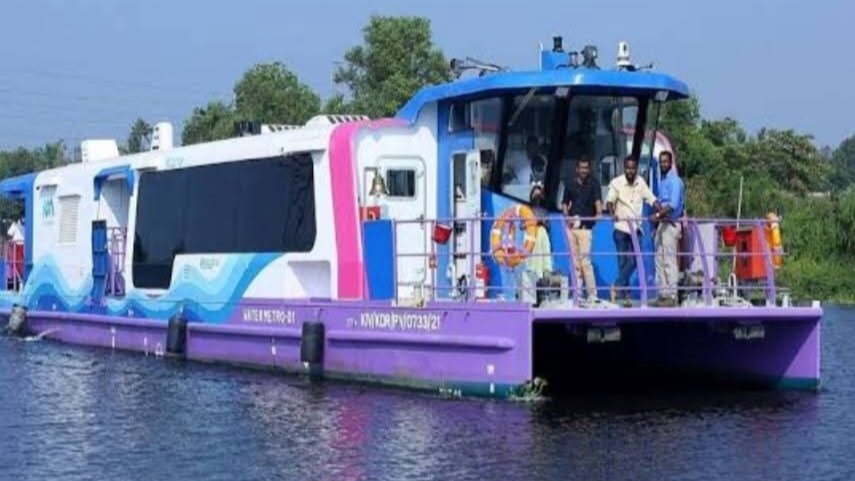
Move over, Manali and Shimla! Bilaspur is gearing up to become the state’s next big tourism hotspot, blending adrenaline-pumping adventures with serene spiritual experiences. The district administration has rolled out ambitious plans to develop water, land, and aerial tourism, promising something for thrill-seekers, pilgrims, and nature lovers alike.
A Sky-High Attraction: The Glass Bridge
Imagine walking on a transparent bridge, suspended high above breathtaking landscapes—Bilaspur’s upcoming Glass Bridge at Bharari will do just that! Designed to rival global attractions, this engineering marvel will offer daredevils an unforgettable experience while giving tourists a reason to extend their stay. Officials confirm the blueprint is ready, and construction will kick off soon after final approvals.
Sailing Through Scenic Routes: The Water Metro
Pilgrims visiting Maa Naina Devi will soon have a faster, more scenic journey thanks to the proposed Water Metro, connecting Bhakra Ghat to Kosariya Ghat. This isn’t just about convenience—it’s about turning travel into an experience. Devotees and tourists can hop on boats, enjoy the tranquil waters, and even transport their vehicles via waterways.
Jet Skis, Kayaking & More: Water Sports at Nakrana
Bhakra Dam’s pristine waters are about to get a lot more exciting! The district is eyeing water sports like jet skiing, kayaking, and boating to attract adventure junkies. The best part? Pilgrims heading to Naina Devi can now add a splash of adventure to their spiritual trip.
Bharari – The New Stopover Destination
Strategically located near Shimla, Manali, and Dharamshala, Bharari will soon feature modern tourist hubs with food plazas, parking, rest areas, and info centers. No more cramped pit stops—just smooth, comfortable breaks for travelers.
Listening to Locals: Boaters Get a Voice
Deputy Commissioner Rahul Kumar made sure local boat operators were heard during inspections, promising quick fixes to their concerns. This people-first approach ensures tourism growth benefits everyone.
Bilaspur’s transformation isn’t just about flashy infrastructure—it’s about jobs for youth, better travel experiences, and putting this hidden gem on India’s tourism radar. With projects set to launch soon, the district is poised to become a must-visit for those seeking adventure, spirituality, and untouched natural beauty.
Spiritual Travel
Shiva Tribe Debuts in Gurgaon’s Tikli-Raiseena: IMPC’s Bold Step to Merge Spirituality, Rural Tourism, and Modern Family Wellness
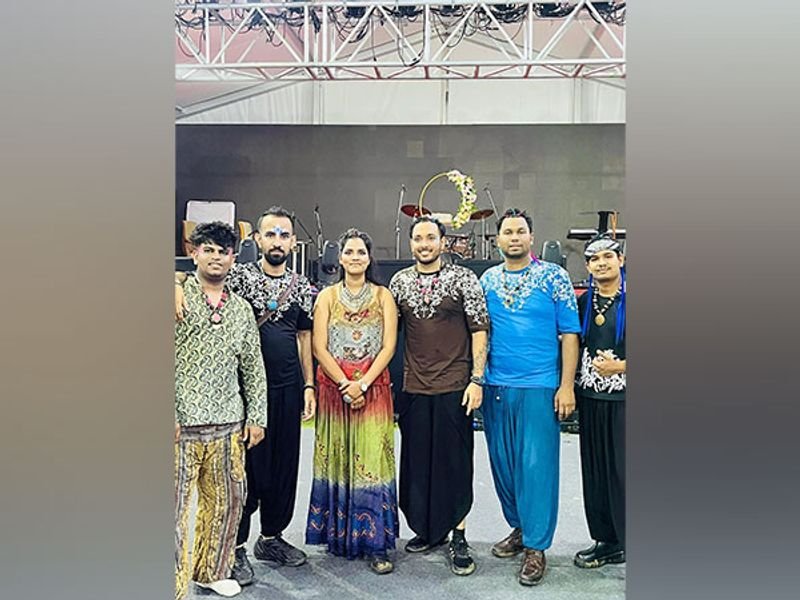
VMPL
New Delhi [India], August 4: In the lush rural landscape of Tikli-Raiseena near Gurgaon, a new chapter in India’s spiritual and rural tourism ecosystem quietly unfolded. The International Mandir Prabandhak Committee (IMPC) launched its ambitious spiritual wellness initiative–Shiva Tribe–an experience-driven, immersive space designed to reconnect Gen Z and modern families with India’s timeless spiritual roots.
Set against the tranquil backdrop of Haryana’s Aravalli fringes, Shiva Tribe is more than a mandir–it is a curated journey of self-discovery, holistic wellness, and cultural revival, seamlessly merging ancient wisdom with modern aspirations. The inaugural three-day Pran Pratishtha Mahotsav was held in July, graced by spiritual luminaries including Pujya Shri Sudhanshu Ji Maharaj, Pujya Shri Dayanand Ji Maharaj, and dignitaries such as Haryana’s former Minister Shri Om Prakash Dhankar. Business leaders, rural development advocates, and spiritual patrons attended in significant numbers–signaling a rising interest in faith-based tourism models.
Spiritual Tourism: India’s Growing Wellness Sector
India’s spiritual tourism market is undergoing a silent revolution. According to the Ministry of Tourism, the wellness and spiritual tourism segment is projected to reach USD 30 billion by 2028, growing at a CAGR of over 10%. With over 330 million domestic religious tourists recorded annually and rising international interest in authentic Indian experiences, initiatives like Shiva Tribe have the potential to create high-value, low-impact tourism models in rural belts–generating employment, fostering entrepreneurship, and revitalizing local economies.
“In today’s fragmented lifestyle, families are searching for meaningful escapes–not just vacations. Shiva Tribe is that sacred pause–a place to reconnect, reflect, and realign, together,” said Dr. Preet Sandhuu, mentor of the project and a key voice in India’s contemporary spiritual movement.
A New Blueprint: Spirituality Meets Community Living
Unlike traditional spiritual centers, Shiva Tribe offers a complete spiritual-eco retreat–including weekend live devotional music by its in-house ‘Shiva Tribe Band’, yoga sessions, mantra-infused meditations, Vedic rituals, and stay facilities for families. It’s a full-circle experience designed to inspire urban youth and families alike to step into a more conscious, value-driven lifestyle.
“Here, spirituality is not a sermon–it’s an experience,” said Shri MP Singh, project visionary and founder of ShivaTribe. “We want to build a network of such community-driven centers across rural India, using temple heritage as a catalyst for rural rejuvenation and youth engagement.”
Rural Regeneration Through Faith
The Tikli model aligns with India’s rural tourism policy goals by transforming underexplored rural regions into mindful tourism destinations. With over 60% of India’s population residing in villages, initiatives like this leverage India’s spiritual capital to promote rural entrepreneurship, handicrafts, organic farming, and ecotourism–creating a sustainable rural economy rooted in culture and community.
IMPC’s Broader Mission
The International Mandir Prabandhak Committee (IMPC), known for initiatives like the Mahasangam Yatra, Trisul Yatra and Shiv-Shakti Kendras, is rapidly becoming a bridge between India’s ancient temple traditions and its digital future. Its work focuses on temple modernization, spiritual leadership development, and community revival–backed by collaborations with scholars, saints, and civic leaders.
By anchoring the Shiva Tribe initiative in Tikli, IMPC demonstrates how faith-based community models can attract tourism, foster economic inclusion, and support national goals like ‘Viksit Bharat’ and ‘Digital Bharat’.
Shared by
(ADVERTORIAL DISCLAIMER: The above press release has been provided by VMPL. ANI will not be responsible in any way for the content of the same)
(This content is sourced from a syndicated feed and is published as received. The Tribune assumes no responsibility or liability for its accuracy, completeness, or content.)
Spiritual Travel
10 oldest temple towns in India for spiritual getaways – The Times of India
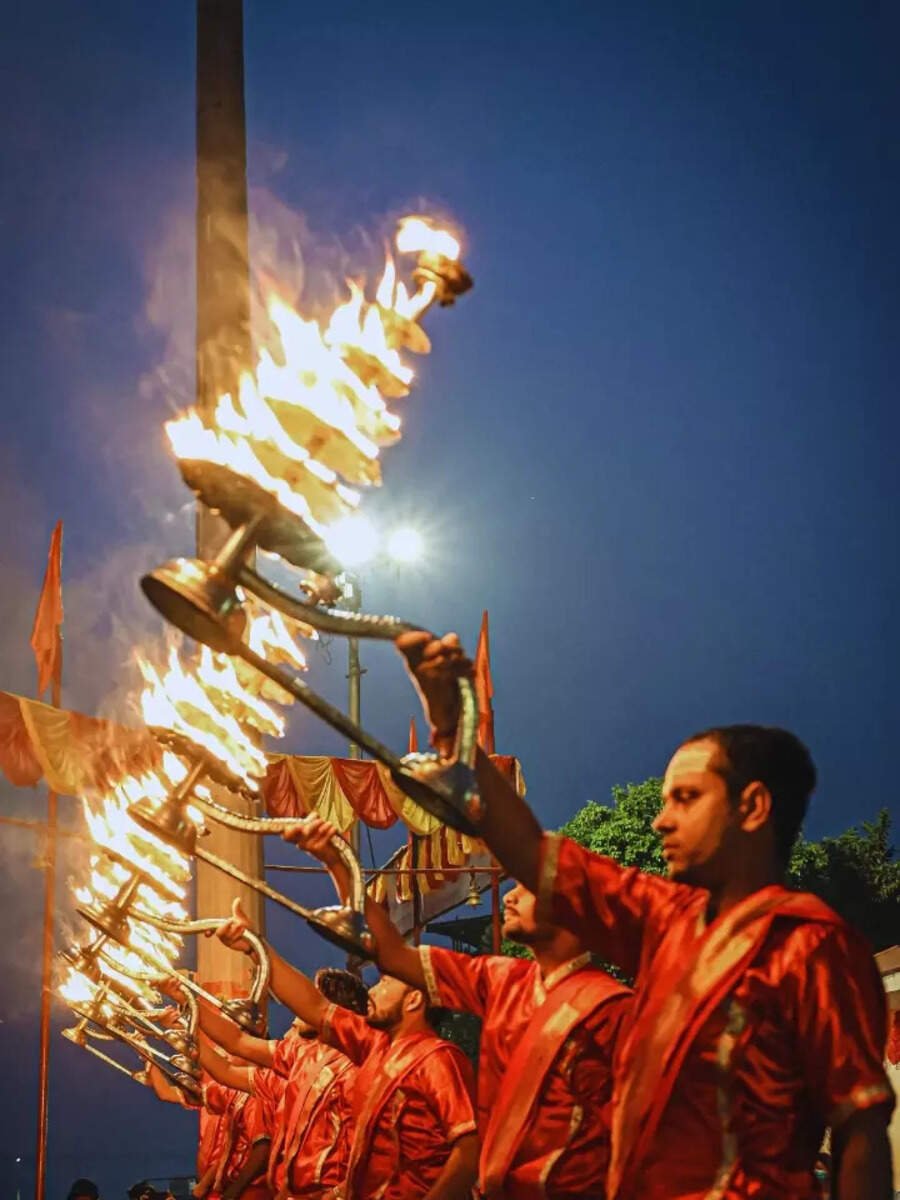
10 oldest temple towns in India for spiritual getaways The Times of India
Source link
-

 Brand Stories2 weeks ago
Brand Stories2 weeks agoBloom Hotels: A Modern Vision of Hospitality Redefining Travel
-

 Brand Stories1 week ago
Brand Stories1 week agoCheQin.ai sets a new standard for hotel booking with its AI capabilities: empowering travellers to bargain, choose the best, and book with clarity.
-

 Destinations & Things To Do2 weeks ago
Destinations & Things To Do2 weeks agoUntouched Destinations: Stunning Hidden Gems You Must Visit
-

 Destinations & Things To Do1 week ago
Destinations & Things To Do1 week agoThis Hidden Beach in India Glows at Night-But Only in One Secret Season
-

 AI in Travel2 weeks ago
AI in Travel2 weeks agoAI Travel Revolution: Must-Have Guide to the Best Experience
-

 Brand Stories1 month ago
Brand Stories1 month agoVoice AI Startup ElevenLabs Plans to Add Hubs Around the World
-

 Brand Stories3 weeks ago
Brand Stories3 weeks agoHow Elon Musk’s rogue Grok chatbot became a cautionary AI tale
-

 Asia Travel Pulse1 month ago
Asia Travel Pulse1 month agoLooking For Adventure In Asia? Here Are 7 Epic Destinations You Need To Experience At Least Once – Zee News
-

 AI in Travel1 month ago
AI in Travel1 month ago‘Will AI take my job?’ A trip to a Beijing fortune-telling bar to see what lies ahead | China
-

 Brand Stories2 weeks ago
Brand Stories2 weeks agoContactless Hospitality: Why Remote Management Technology Is Key to Seamless Guest Experiences



